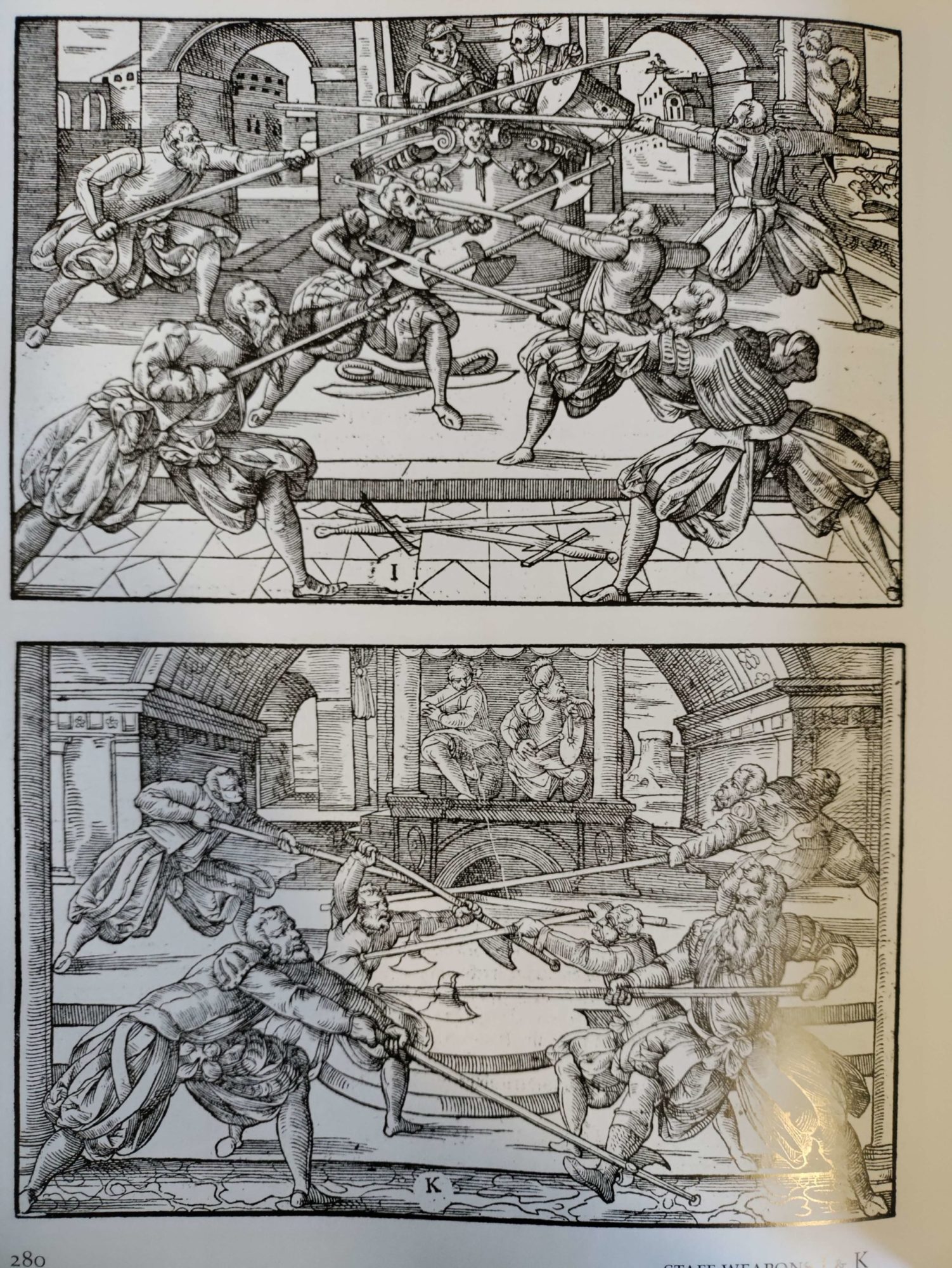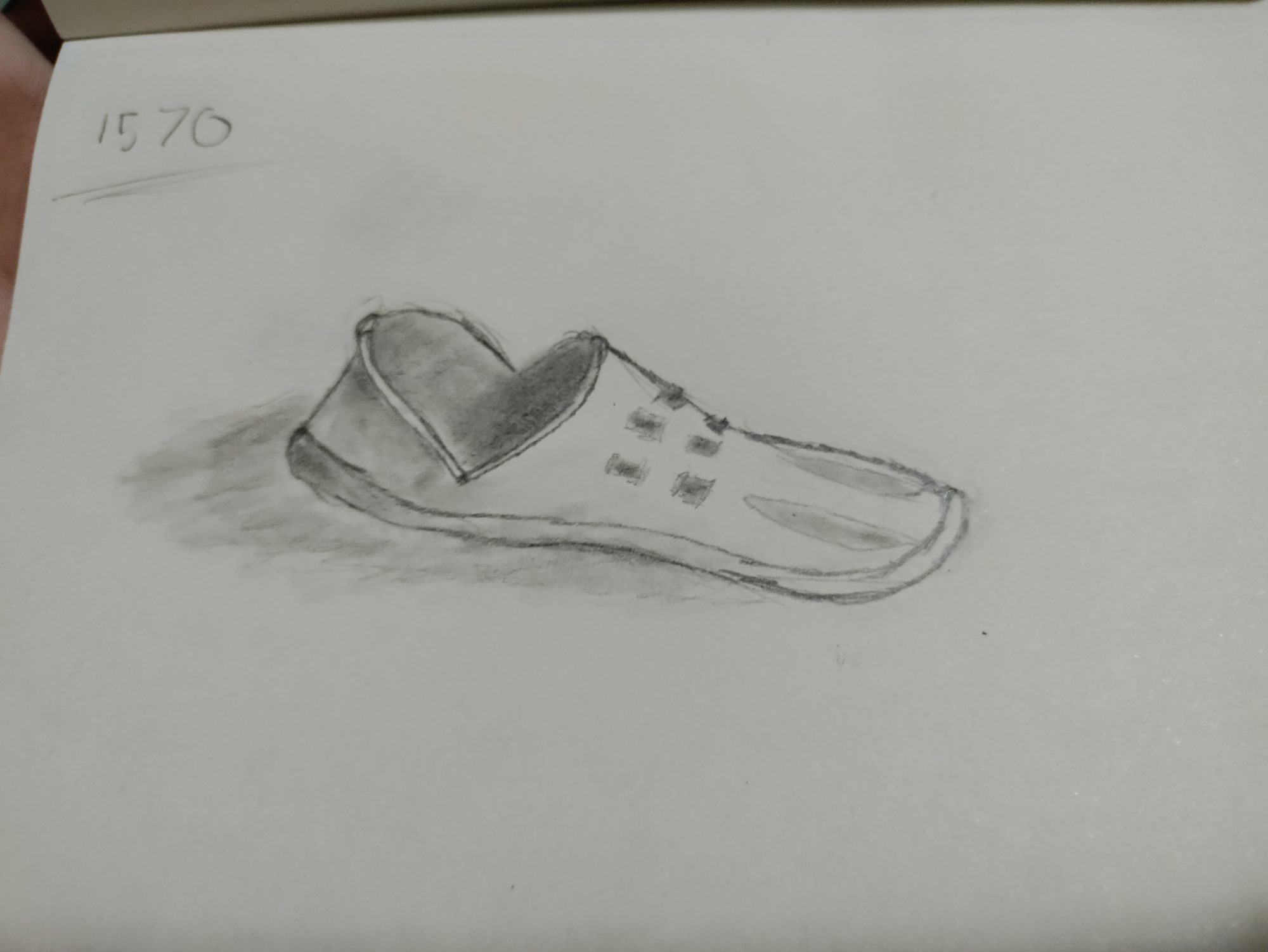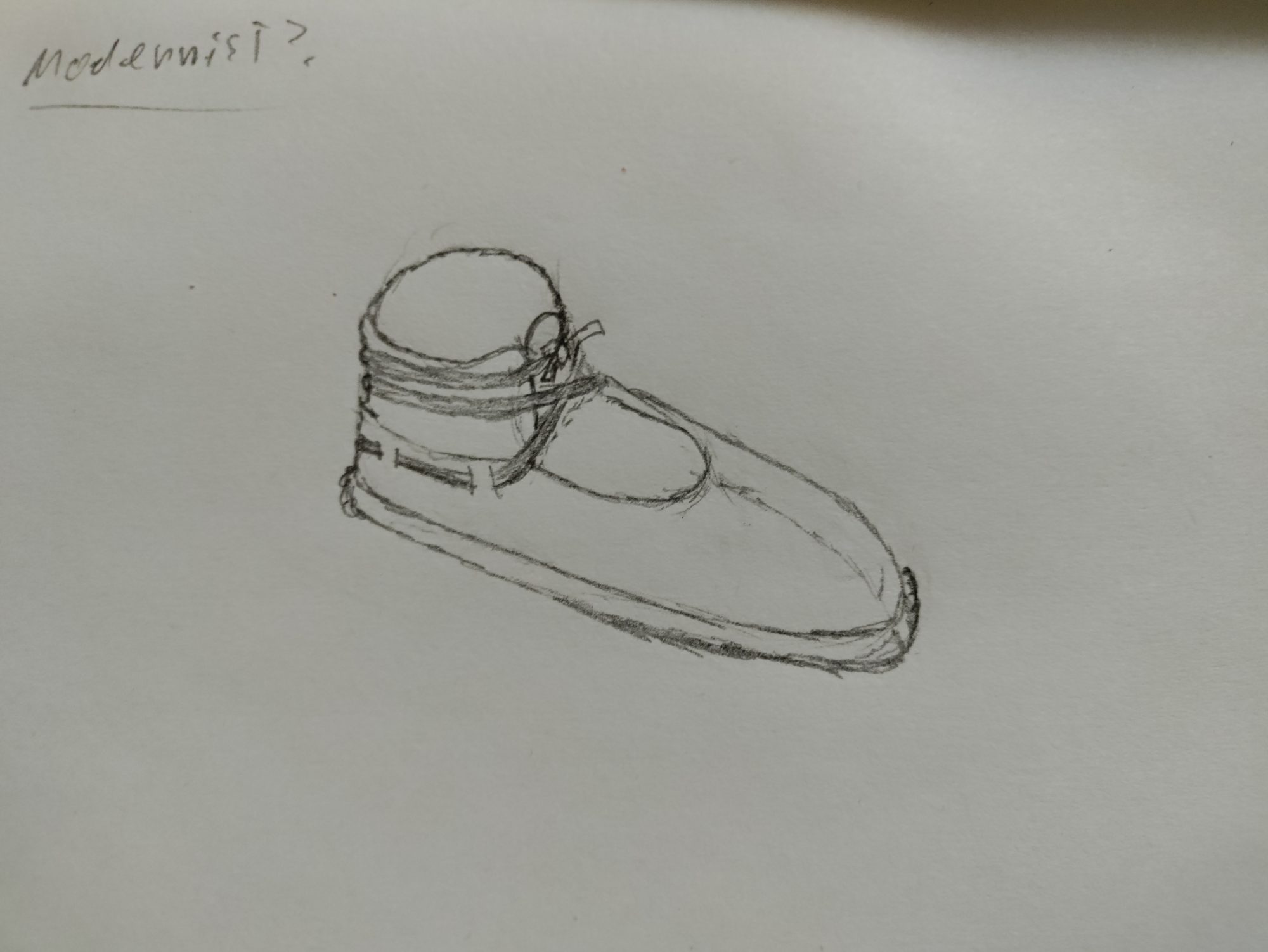.
What could be said for this? Moccasins fit the early American aesthetic, whether of the natives or early frontiersmen, even into the mid 1800’s. Today they fit more into comfort wear, with softer materials and linings with rubber soles, but this is not my goal. Functional, lightweight shoes that wouldn’t be out of place in the 1830’s western US are.
To conceptualize in drastically different aesthetics:
One artist’s interpretation of what might have been the style of the time in Germany in 1570 I found in a combat manuscript that still survives thanks to the author, Joachim Meyer, commissioning woodcarvings of the supporting images. Pictures of these carvings, as below, show a not dissimilar style of footwear, also low profile, almost enough to seem impractical.
.

.
Using this as reference, below is a sketch of mine blending the structure of a classic moccasin with the style of the carving above. It maintains the front and rear structure of a moccasin, as well as the common thicker leather outsole. However, most of the top is indicative of the style above, with a deeper cut at the center, pleats or gussets in the front, and what must be the method of tightening at the center, rather than at the ankle.
.

.
Finally, in the modernist aesthetic, one of the classic styles of moccasin I referenced in a previous post, sketched below. To fit modernism, the leather would be dyed the deepest possible black, and likely roughed to maintain a matte or suede finish. Otherwise, moccasins are not typically aesthetically busy, unless decorated afterwards, which I did not intend to add initially.
.

.
These alternative aesthetics do bring in some food for thought, so to speak. My plans will become much more concrete once I have the precise quality and dimensions of the stock material from which I could make myself a pair of moccasins. If I find myself with spare leather or time, I may choose to incorporate some different design choices as above.
References:
Die Kunst Des Fechtens, by Joachim Meyer, 1570.

2 Comments. Leave new
The shading in the first photo gives quite a lot of dimension to the sketch. Great work highlighting how layers interact with each other.
I think the idea of creating a mocassin is really intriguing and cool to use the early American aesthetic as inspiration. Where the two styles really differ in my opinion is in the height that the shoe comes up on the ankle. Is there a direction you prefer, or will you make a choice based on comfort or looks?